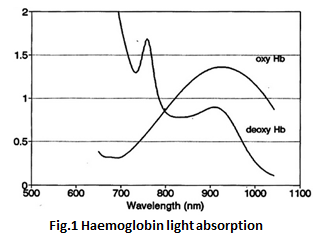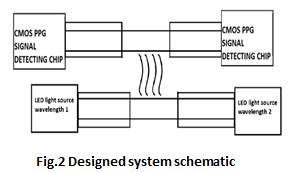A combined optical and electrical textile for non-invasive physiological monitoring
Introduction
•Peripheral capillary oxygen saturation (SpO2), a very accurate and widely used estimation of blood oxygen saturation, can be calculated from two different wavelength PPG signals.
•Photoplethysmogram(PPG) is a term referring the changes in the blood volume caused by heart pumps (with each
cardiac cycle).
•The blood volume changes can be detected by using a LED to illuminate light to the skin and then measuring the reflected or transmitted light intensity.
•Utilising optical fibres incorporated into a textile to measure the SpO2, the
pulse oximeter is available to wear.
Working Principle
•There are two different types of haemoglobin (oxyhaemoglobin(HbO2) and deoxygenated haemoglobin(Hb)). SpO2 is the fraction of HbO2 to total haemoglobin(HbO2+Hb)
•Since two different types of haemoglobin have different optical absorption performance(shown in Fig.1), SpO2 can be deduced from the PPG recorded at two different wavelengths.
•The device is developed to collect reflected PPG signals to measure the SpO2(shown in Fig.2).
•Optical fibres are applied to illuminate two different wavelengths light to skin and collect reflected light.
•Two different wavelength light used in the device are 625nm(red) and 850nm(NI)
Experiment Results

Future Work
1.Calibrate the reflective pulse oximeter.
1.Does Light wavelength affect the SpO2?
2.Does Pressure affect the SpO2?
3.Does the light diffusion caused by hot glue affect SpO2
2.Applying this sensor in CRT test.
3.Design own pulse oximeter system.
4.Using Laser doppler as light source. (Possible)

